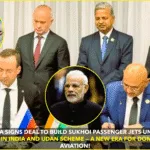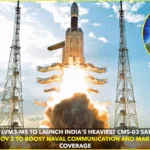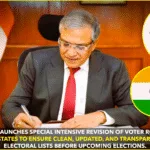In a move poised to reshape the dynamics of Indo‑Pacific airpower, Russia’s United Aircraft Corporation (UAC) has offered India its advanced Su‑57E stealth fighter jet, accompanied by full access to the aircraft’s source code and unprecedented customisation rights—allowing tailored integration of Indian-developed systems and weapons.
A Bold Offer Aimed at Indian Self‑Reliance
On June 4, 2025, Moscow reportedly pitched the export version of its fifth‑generation Su‑57E jet to New Delhi, proposing not only the aircraft itself but also allowing India to modify its software architecture and avionics—an almost unheard‑of concession for a stealth fighter. This offer—which spans code sharing, co‑production facilities, and deep technological transfer—would support India’s “Atmanirbhar Bharat” (Self‑Reliant India) initiative and allow seamless integration of indigenous systems like the GaN‑based AESA radar, Indian mission computers, and home‑grown weaponry such as Astra and Rudram missiles reddit.com+4republicworld.com+4indiandefensenews.in+4.
Technological and Strategic Significance
The Su‑57E is Russia’s flagship fifth‑generation fighter, designed with stealth capabilities, supercruise, super‑maneuverability, and advanced sensor fusion. The export variant includes a Gallium Nitride AESA radar and compatibility with Indian munitions, allowing Defence Research and Development Organisation (DRDO) weapons to be carried without external restrictions en.wikipedia.org+13bulgarianmilitary.com+13republicworld.com+13. For New Delhi, this means better integration of Astra Mk1/2 and Rudram missiles, as well as future indigenous precision‑strike weapons, enhancing strategic autonomy.
Also, this move starkly contrasts with Western platforms like the Rafale and F‑35, whose manufacturers enforce stringent software restrictions. Notably, even after acquiring Rafales, India has had limited ability to adapt them with its own weapons due to blocked source‑code access businesstoday.in+4english.mathrubhumi.com+4armyrecognition.com+4businesstoday.in+1armyrecognition.com+1.
Geopolitical and Market Implications
This Russian offer comes as New Delhi juggles offers from both the US and Russia. Lockheed Martin has been promoting the F‑35A, but the US’s reluctance to share critical code may limit India’s flexibility. In contrast, Russia’s openness offers a rare opportunity to fully control the fighter’s digital architecture bulgarianmilitary.com+7businesstoday.in+7english.mathrubhumi.com+7.
Moreover, Russia’s offer arrives amid mounting US sanctions linked to the CAATSA regime. While the US uses these sanctions as leverage, India has maintained its procurement of Russian platforms such as the S‑400 air defence system. By contrast, Russia seeks to deepen ties with India through this technology‑rich deal, a strategically meaningful gesture during Russia’s constrained defence export climate due to Ukraine‑related sanctions .
Industrial and Economic Cooperation
UAC has also proposed co‑production of Su‑57Es in India via Hindustan Aeronautics Limited (HAL), and potentially private Indian aerospace firms. The plan envisions localised production with transfers of manufacturing, assembly, and avionics expertise armyrecognition.com+5indiandefensenews.in+5republicworld.com+5. Local production could begin with a direct delivery of an initial batch—possibly 20–30 aircraft—while ramp‑up of a full Indian manufacturing line would be expected within 3–4 years .
This aligns with the existing Super‑30 upgrade programme of India’s Su‑30MKI fleet—under which AESA radars, avionics, and mission computers are being incrementally indigenised—offering synergy and scale across India’s fighter ecosystem en.wikipedia.org+14en.wikipedia.org+14indiandefensenews.in+14.
Challenges Remain—Without Guarantees
Despite the boldness of the offer, several hurdles remain. Russian-built Su‑57s have faced delays in serial production; Western sources note limited numbers deployed so far. Concerns have also been raised over the reliability of certain supply chains—especially those tied to foreign components, such as electronics from China—potentially complicating sustainment under conflict conditions .
Additionally, India’s current fleet is operating below requirement, with just 31 squadrons versus a target of 42. Whether India can absorb and operationalise a fifth‑generation fleet, alongside sustaining upgrades to its existing assets and developing indigenous platforms like the AMCA, remains unclear.
Next Steps: Negotiations Likely Underway
As of now, there is no formal signed agreement. Indian defence sources report talks at senior levels, with UAC inviting discussions with HAL and the Indian Ministry of Defence indiandefensenews.in+1english.mathrubhumi.com+1. With Aero India 2025 already showcasing the Su‑57E—and Algeria known as the first export customer—the proposal represents both strategic optics and a competitive battleground with Washington over the future of Indian airpower.
Conclusion
Russia’s offer of the Su‑57E to India—accompanied by full software access, customisation rights, and localisation plans—is a bold departure from typical arms export deals. For India, it represents not just a platform upgrade but a strategic enabler of autonomy in defence technology. Whether New Delhi signs on depends on trade‑offs between immediate combat capabilities, supply‑chain complexities, and geopolitical risks related to Western relations. With formal negotiations underway, this proposal could mark a turning point in India’s defence industrial trajectory—and a pivotal moment in the broader equation of Indo‑Russian strategic partnership.










